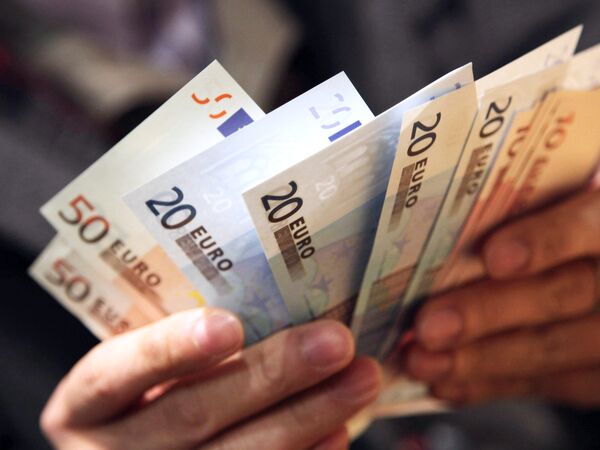Euro on Cusp of Best Winning Streak in Two Decades Versus Dollar

The euro is on the verge of its longest winning streak against the dollar in more than two decades — and options traders are betting the rally isn’t over yet.
The common currency gained as much as 0.4% to $1.1829 on Tuesday, its strongest level since September 2021 and up around 14% year-to-date. A higher close would extend its rally to a ninth straight day, the longest streak since 2004 and eclipsed only twice since the currency’s inception in 1999.
Options traders have ramped up bullish positioning. So-called risk reversals — a closely watched measure of market sentiment — posted the third-strongest bullish repricing of the year last week. Data from the Depository Trust & Clearing Corporation show that nearly two out of three options in the past week targeted a stronger euro.
Analysts also increasingly see the euro rallying toward $1.20 in the coming months. Strategists at Societe Generale SA, including Kit Juckes , expect the common currency to peak around $1.25 over the medium term, even if it lags the yen and some Asian peers in the second half of the year.
European Central Bank Vice President Luis de Guindos said Tuesday that while a move to $1.20 is “acceptable,” further gains would make policy makers’ task more complicated.
For Nicholas Wall , head of Global FX Strategy at J.P. Morgan Asset Management, the ECB is doing the right thing by embracing a euro that’s attracting more demand as a reserve currency. “A stronger euro is good for Europe partly in the context of rising oil prices,” he said.
The euro’s rally has been underpinned by the long-running slide for the dollar, with fresh momentum added in recent weeks from weaker US data and growing conviction that the Federal Reserve is preparing to ease policy more aggressively than the European Central Bank. Attention is also turning to US data due this week including ISM manufacturing, job openings and non-farm payrolls.
Money markets are pricing in about 125 basis points of Fed easing over the next nine meetings, compared with just about 25 basis points from the ECB.
The latest euro-area inflation data offered little reason for the ECB to alter its stance. Consumer prices rose in France and Spain but held steady in Italy and unexpectedly eased in Germany, reinforcing the central bank’s view that inflation will converge sustainably toward its 2% target.
Still, much of the euro’s recent strength is about the US rather than Europe. According to Danske Bank AS strategists led by Jens Naervig Pedersen , the dollar’s structural decline has resumed as geopolitical risks fade and focus returns to the US economy and political backdrop.
“We see many reasons to be short USD right now, including the possibility of a new Fed Chair being appointed earlier than expected, the Big Beautiful Bill on 4 July, and the tariff deadline on 9 July,” he said.

